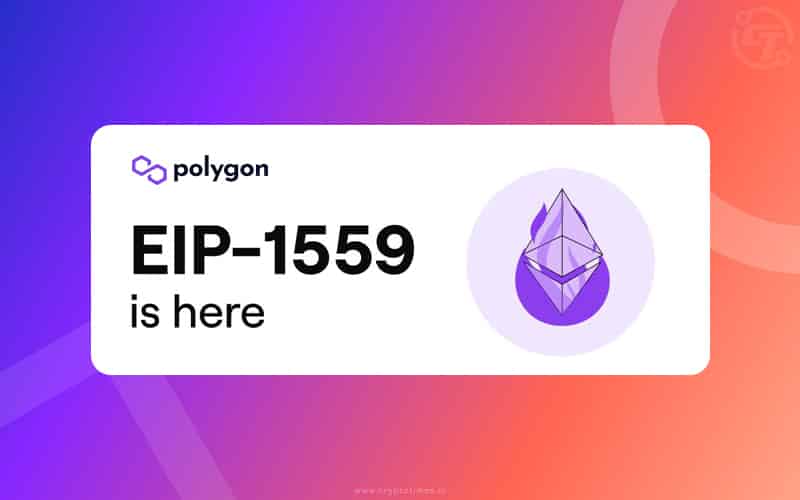In Brief:
- Polygon has launched the EIP-1559 upgrade on its mainnet to improve “fee visibility”.
- The upgrade has begun with real-time burning of the native MATIC token.
- MATIC supply will become deflationary with 0.27% of the total supply being burnt every year.
Layer two scaling solution Polygon rolled out Ethereum Improvement Proposal 1559 (EIP-1559) on its mainnet. The upgrade has begun with real-time burning of the native MATIC token and bringing better fee visibility.
As per the blog, the burning is a two-step affair that begins on the Polygon network and completes on the Ethereum network. The Polygon team has also developed a public interface, allowing its users to monitor and become part of the burning process.
The team stated further that just like Ethereum, the MATIC supply is likely to become deflationary with 0.27% of the total supply being burnt every year as per estimations. Currently, there is a fixed supply of 10 billion MATIC tokens with 6.8 billion in circulation.
The EIP-1559 upgrade has eliminated the need for the first-price auction method as the main mechanism for fee calculation. Instead, there is a discrete base fee for transactions to be included in the next block and a priority fee to enable faster processing. The base fee, which fluctuates depending on network congestion, is then burned.
In August last year, EIP-1559, known as the London hardfork, went live on Ethereum mainnet and was one of the biggest changes in its history. The upgrade has now launched on the layer-two scaling network Polygon, following a successful upgrade on the Mumbai testnet. The update went live at block 23850000.
The Polygon team also informed that the upgrade would also reduce spam and network congestion. It also noted – “Deflationary pressure will benefit both validators and delegators because their rewards for processing transactions are denominated in MATIC.”





